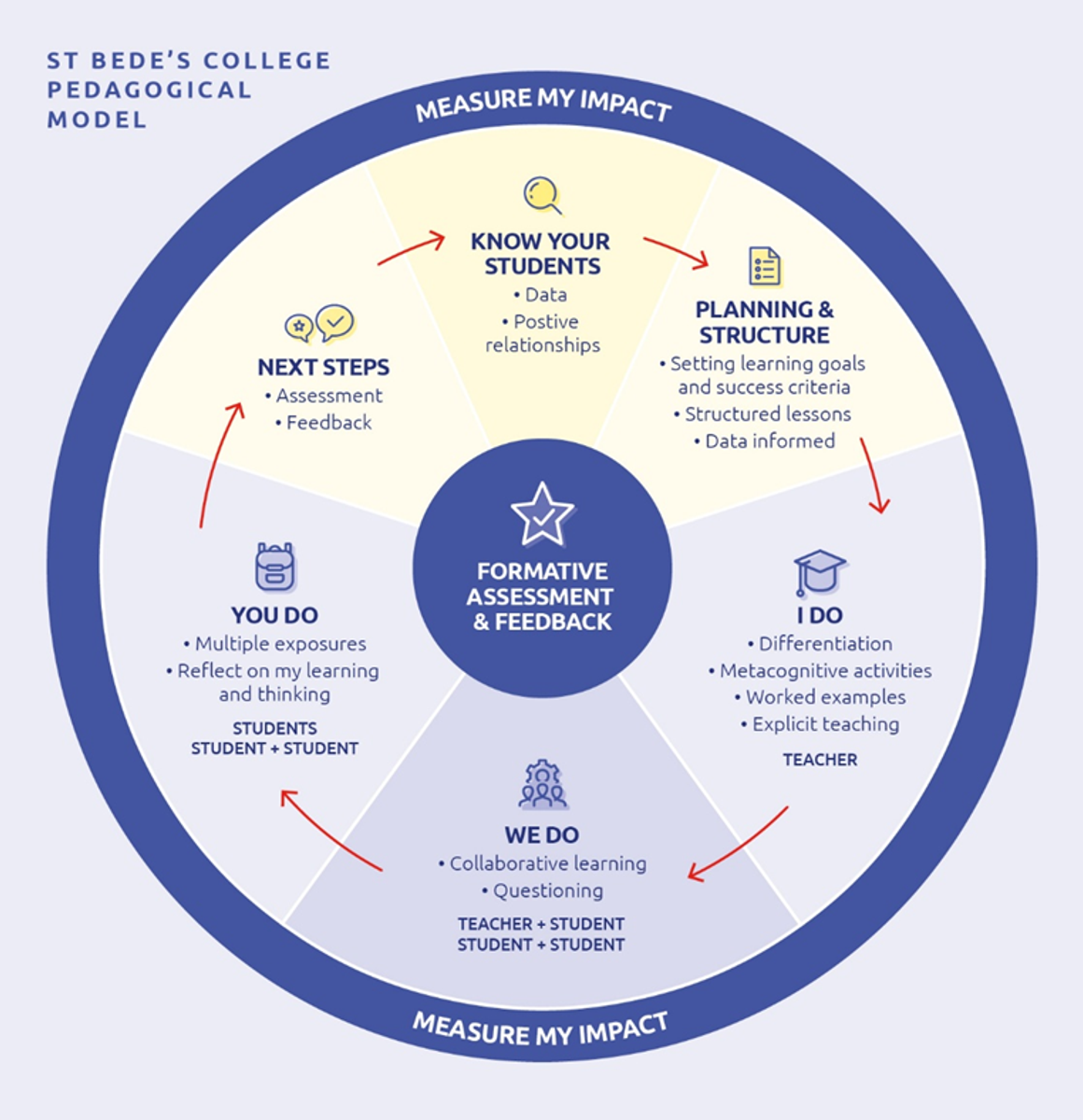Teaching and Learning

Teaching Model At St Bede’s College
In our previous newsletter, expectations of students and their approach to learning in the classroom were clarified. The manner in which these expectations are made clear is through the Learning Habits Rubric, with students assessed and reported on each term, as well as follow up as required. These habits are based on organisation, collaboration, seeking feedback and completion of learning activities in the classroom.
The first three focus areas of the rubric are heavily reliant on the approach of the student. They can be both enacted and improved by the student, however most importantly are evidence-based approaches that improve student learning. Classroom activities, on the other hand, are very teacher reliant; if learning activities are not effective, then student learning is compromised as a result. As such, St Bede’s College has a Pedagogical Charter - the model for teaching at the school - that is based on research and has been determined to be an effective way to structure learning activities.
The key parts to the model as shown above that apply to what happens in the classroom are as follows;
Gradual Release of Responsibility (I do, we do, you do). This involves a deliberate transfer of skills, knowledge and understanding from the teacher to the student. It moves from explicit instruction and modelling from the teacher, to guided practice and on to independent practice. As teachers, we progress through the process at an appropriate time and pace, checking for understanding that allows the students to learn independently.
Formative Assessment. This involves regularly assessing student learning across the teaching sequence prior to the undertaking of a summative (final) assessment. It is what is used by the teacher to determine an appropriate time to move through stages (from guided practice to independent practice, for example) as well as offer strategies for improvement.
Student willingness to engage in all elements of the model is crucial if learning is to be maximised; if a student is passive, then learning is undoubtedly compromised. Importantly, the classroom as a safe space for students to make mistakes is central to learning, even more so than getting it right the first time.
As teachers, we are supported in implementing the model through extended professional learning and coaching. When Dylan Wiliam visited last year, he summed teachers up well when he said that we are the most optimistic people on the earth; that is we believe if we just teach something in a slightly different way from last time then every student will get it. With teachers from many schools in the room, the agreement was universal, however as opposed to putting that responsibility on the students, it was indicative that we strive to be better. That, in essence, sums us up very well.
Brenden Mair
Deputy Principal - Teaching and Learning

